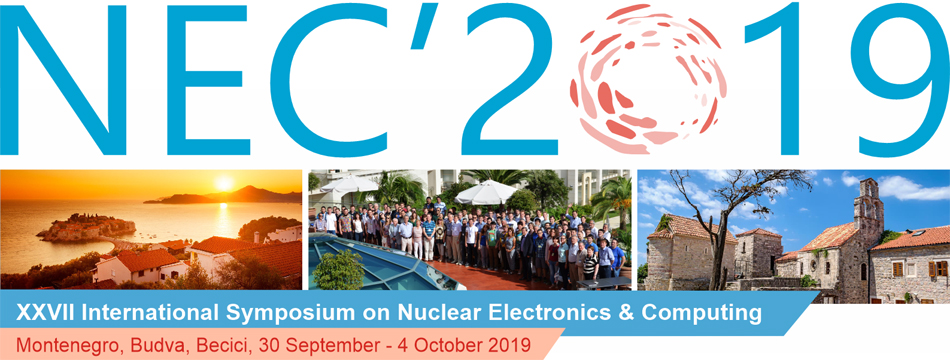Speaker
Dr
Dmitry Podgainy
(JINR)
Description
At present, the GOVORUN supercomputer is used for both theoretical studies and event simulation for the MPD experiment of the NICA megaproject. To generate simulated data of the MPD experiment, the computing components of the GOROVUN supercomputer, i.e. Skylake (2880 computing cores) and KNL (6048 computing cores), are used; data are stored on the ultrafast data storage system (UDSS) under the management of the Lustre file system with a subsequent transfer to cold storages controlled by the EOS and ZFS file systems. UDSS currently has five storage servers with 12 SSD disks using the NVMe connection technology and a total capacity of 120 TB, which ensures low time of access to data and a data acquisition/output rate of 30 TB per second. Due to the UDSS high performance, by September 2019 over 100 million events for the MPD experiment have already been generated and more than 30 million events have already been reconstructed. In future, other MC generators are expected to be used as well.
The implementation of different computing models for the NICA megaproject requires confirmation of the model’s efficiency, i.e. meeting the requirements for the time characteristics of acquiring data from detectors with their subsequent transfer to processing, analysis and storage, as well as the requirements for the efficiency of event modeling and processing in the experiment. For these purposes it is necessary to carry out tests in a real software and computing environment, which should include all the required components. At present, the GOVORUN supercomputer is such an environment; it contains the latest computing resources and a hyperconvergent UDSS with a software-defined architecture, which allows providing a maximum flexibility of data storage system configurations.
It is planned to use the DIRAC software for managing jobs and the process of reading out/recording/processing data from various types of storages and file systems.
All the enumerated above will allow one to check a basic set of data storage and transmission technologies, simulate data flows, choose optimal distributed file systems and increase the efficiency of event modeling and processing.
The studies in the given direction were supported by the RFBR grant (“Megascience – NICA”), №18-02-40101 and 18-02-40102.
Author
Dr
Dmitry Podgainy
(JINR)
Co-authors
Andrey Dolbilov
(JINR)
Andrey Moshkin
(JINR)
Dmitry Belyakov
(JINR)
Mr
Maxim Zuev
(JINR)
Dr
Oksana Streltsova
(JINR)
Dr
Oleg Rogachevskiy
(JINR)

